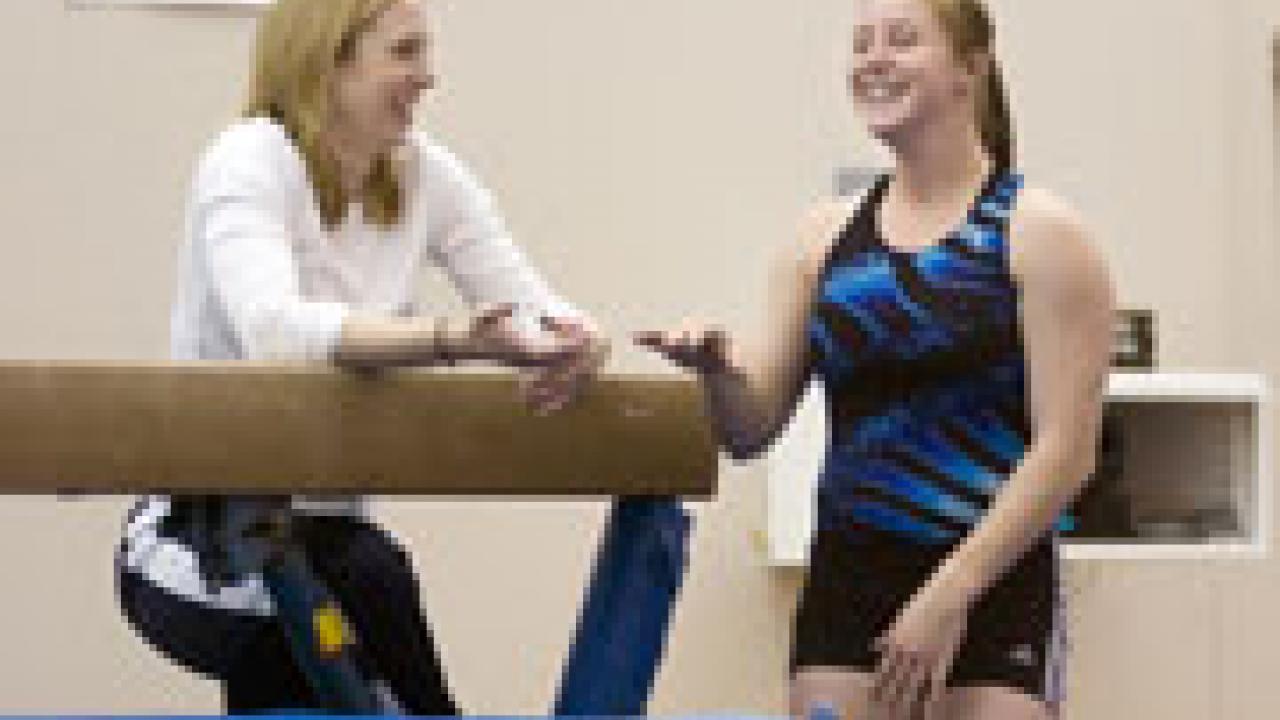UC Davis is moving up its entire competitive sports program to Division I, and the Aggies mean business.
Recent victories over a big-name program like Stanford — the Aggies stunned the Cardinal in football in September, and the Aggie men's basketball team upset Stanford last Sunday — and the same basketball team's recent road trip back east to face Dartmouth and Harvard are bringing increased attention to the athletics department.
All of this means, in turn, that athletics is paying closer, much closer, attention to the NCAA's Division I rules manual — all 507 pages of it.
Why?
"The stakes are raised. … More people want a piece of the pie," said Erica Satterfield, assistant commissioner for compliance for Division I's Big West Conference. UC Davis is poised to join the Big West in 2007-08 after a four-year transition from Division II and its 384-page rule book.
Higher stakes and the accompanying pieces of pie — including advertisements that feature student-athletes, or arranging for basketball players to serve as waiters for an athletics fundraiser in a restaurant — can get the university in trouble with the National Collegiate Athletic Association.
As a result, the campus has hired two full-time compliance officers to monitor its adherence to the myriad rules of D-I.
And there are plenty of them. The NCAA is perhaps best known for limiting when and how often coaches and staff can come in contact with prospective student-athletes, and for eligibility standards.
But Division I also regulates recruiting material, such as brochures and media guides. For example, a school can produce one or the other, and give it to prospects, so long as it conforms to these rules: The publication cannot exceed 208 pages, 8½-by-11 inches, and — except for the front and back covers, inside and out — can be only one color.
NCAA rules are designed to level the playing field, Satterfield told Davis athletics officials, development and marketing staff, and media relations personnel during a Nov. 21 seminar in Memorial Union. She met with coaches earlier in the day.
The NCAA enacted the 208-page limit for Division I books in the spring of 2005. For some schools, the rule meant cutting 300 pages or more from their media guides.
"I sometimes wonder how some people can fill 500-page books," said Mike Robles, assistant athletics director for media relations at Davis. His department put out a 2005 Aggie football guide of 104 pages, down four from last year.
The University of Southern California cut 200 pages from its football guide to meet the new restriction, but added a hard cover with a metallic covering on the front. The NCAA allows color on the front and back covers, but does not specify soft cover or hard cover.
UC Davis stuck with a soft cover and spiral binding for the 2005 football guide. But the athletics department did something else to set the guide apart: blue ink on the inside. After all, Robles said, the NCAA's one-color rule for the inside does not specify black.
Satterfield said NCAA rules promote competitive equity "between the haves and the have-nots, and between metropolitan areas and not-so-metropolitan areas." And she gave another reason for the rules: "Because coaches don't trust each other."
In Division II, coaches and staff can go see a prospective student-athlete in competition — to evaluate him or her — as often as they like. However, the coaches and staff can have only three contacts — in person and off campus — with each prospect during the academic year. Division I limits the number of evaluations and contacts to seven, with no more than three contacts, for all sports except football and basketball.
Recruiting restricted
The rules for football and basketball specify when universities can evaluate or contact prospective student-athletes, and restrict such activity as follows: football, three evaluations and six contacts; men's basketball, seven recruiting opportunities with no more than three contacts; and women's basketball, five recruiting opportunities with no more than three contacts.
Athletics officials can correspond as often as they like with prospects, starting Sept. 1 of their junior years in high school, for all sports except men's basketball, in which case the correspondence can begin June 15 of the sophomore year.
But correspondence can only be by letter or undecorated postcards, sent by first-class mail — no Priority Mail or Federal Express. And, if officials want to stuff some other material in the envelope, they must make sure the extra information is printed in black ink on white paper.
E-mail is OK, but it cannot include animation, or video or audio clips. The reason, again, is to prevent big-budget schools from overpowering their rivals, in this case with computer wizardry.
Exploitation eyed
Universities must guard against student-athletes' connections to advertising — in other words, athletics departments do not want to see their star quarterback's photo in an ad selling pizza or anything else.
Marketing restrictions are designed to keep universities "from exploiting student-athletes," Satterfield said.
The rules extend to events at businesses, including restaurants where student-athletes agree to wait tables as a fund-raiser for the athletics department. That is impermissible, even if the restaurant gives all of its receipts to the university.
In the NCAA's view, the restaurant stands a chance of building its business on subsequent days.
Photos of athletes are permissible in advertisements that promote the university as a whole, Satterfield said. Such ads can include sponsor logos — but only one per sponsor.
And, believe it or not, while ads can show a sponsor's logo, they cannot show the sponsor's product, such as pizza.
Steve Wilkinson, president and founder of Davis-based Steve's Pizza, said his primary reason for advertising with the Aggies is because he thinks "very highly" of the athletics program and the student-athletes.
"I hope that just through my name, that people will support me, too," he said.
Media Resources
Clifton B. Parker, Dateline, (530) 752-1932, cparker@ucdavis.edu
